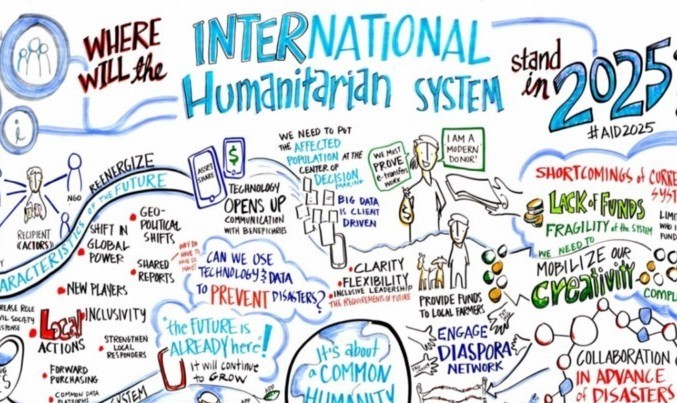Civil society organizations (CSOs) are non-state actors that do not seek to generate profits nor to seek governing power, but advance shared goals and interests based on ethical, cultural, scientific, religious, or philanthropic considerations (Asian Development Bank, 2019). There are many types like community-based organizations, development non-governmental organizations (NGOs) or CSOs, faith-based organizations, philanthropic foundations or organizations, international NGOs, labor unions, NGOs, people’s organizations, professional associations, research institutes, social movements, and coalitions and networks. Of all these CSOs, 18 to 44 percent work in education sector (Salamon et al, 1999, as cited in Bromley, Schofer, & Longhofer, 2018) as donors and/or program implementers to achieve quality education (Sustainable Development Goal [SDG] 4).
Financing Education
According to the 2017 Organisation for Economic Co-operation and Development (OECD) survey, philanthropic organizations (POs) gave US 1.5 billion for the educational sector for the years 2013 to 2015 (Saner & Yiu, 2019). Saner and Yiu (2019) provide tips to POs in financing education in developing countries (DCs):
- Be aware of the recipient country’s SDG strategy.
- Build on the experience and resourcing strategies of transparent, inclusive, and participatory partnerships with the public and private sector and civil society.
- Follow the DC’s regulatory framework, if any.
- Know operational obstacles in financing or providing education.
- Assess local counterparts’ view (e.g. in favor or not in favor of liberalisation) in participation of POs.
- Monitor own performance through the following questions:
- Are the educational services delivering the learning outcomes for the students, families and communities in terms of acquired new competencies?
- Is the education contributing to the economic vibrancy and social mobility of the families and communities that benefit from the PO’s services in terms of employability, employment and liveable wage?
- Is the schooling being supported by the PO encouraging individual student’s desire and motivation for learning?
- Does the school provide learning opportunities to the staff and teachers and help embark on lifelong learning?
- How does the PO use its funds?
- Do the funded interventions address key priorities of the local community and deliver results?
Improving Education Outcomes
Giving money is one thing, but actually producing results is another. In a cross-national longitudinal study, the researchers investigated the effects of CSOs to education outcomes, such as education spending and aid, secondary and tertiary enrollment, and women in secondary and tertiary education, in more than 130 countries over 1970 to 2014. They found that an expanded education CSO sector is positively associated with education spending and aid levels, secondary and tertiary enrollment, and women in tertiary education. This means the more there are domestic CSOs, the more there is national state investment in education and education-related international aid, the better is the gross enrollment ratio, and the more women-inclusive is tertiary education. The researchers posit that this is due to direct effects of CSO work to education outcomes, growing advocacy for education, and the indigenization of world cultural principles valuing voluntary organizing and education.
Quality Education in 2030
In the next decade, the world aims to attain the following, among others (United Nations):
- Ensure that all girls and boys complete free, equitable and quality primary and secondary education leading to relevant and Goal-4 effective learning outcomes. However, as of last year, more than half of children and adolescents worldwide are not meeting minimum proficiency standards in reading and mathematics (United Nations, 2018)
- Ensure that all girls and boys have access to quality early childhood development, care and pre-primary education so that they are ready for primary education. This has improved as seen through the global participation rate in early childhood and primary education, which increased from 63% in 2010 to 70% in 2016 (United Nations, 2018).
- Substantially increase the supply of qualified teachers in developing countries. As of 2016, there have been around 85% of primary school teachers trained worldwide (United Nations, 2018).
- Build and upgrade education facilities that are child, disability and gender sensitive and provide safe, non-violent, inclusive and effective learning environments for all. However, as of 2016, only 34% of primary schools in least developed countries had electricity and less than 40% had basic handwashing facilities (United Nations, 2018).
As seen above, there has been some progress in global education but more still needs to be done. CSOs have been generous in their time, work, and money to fund initiatives in education and bring about outcomes, but will this be enough? With the help of other actors such as governments and other institutions, hopefully, it will be.
References
- Asian Development Bank. (2009). Civil Society Organization Sourcebook: A staff guide to cooperation with Civil Society Organizations. Mandaluyong: Asian Development Bank.
- Bromley, P., Schofer, E., & Longhofer, W. (2018). Organizing for Education: A Cross-National, Longitudinal Study of Civil Society Organizations and Education Outcomes. VOLUNTAS: International Journal of Voluntary and Nonprofit Organizations, 29(3), 526-540. doi:10.1007/s11266-018-9979-9
- Saner, R., Yiu, L. (2019). Financing Education in Developing Countries: Philanthropic Organizations need to monitor their investment for impact. CEPS Working Paper Series, No. 15, Basel: CEPS.
- United Nations. (n.d.). Education - United Nations Sustainable Development. Retrieved June 27, 2019, from https://www.un.org/sustainabledevelopment/education/
- United Nations. (2018). Goal 4: Sustainable Development Knowledge Platform. Retrieved June 27, 2019, from https://sustainabledevelopment.un.org/sdg4











